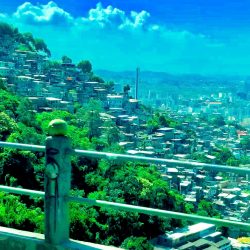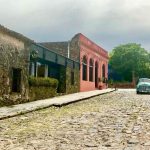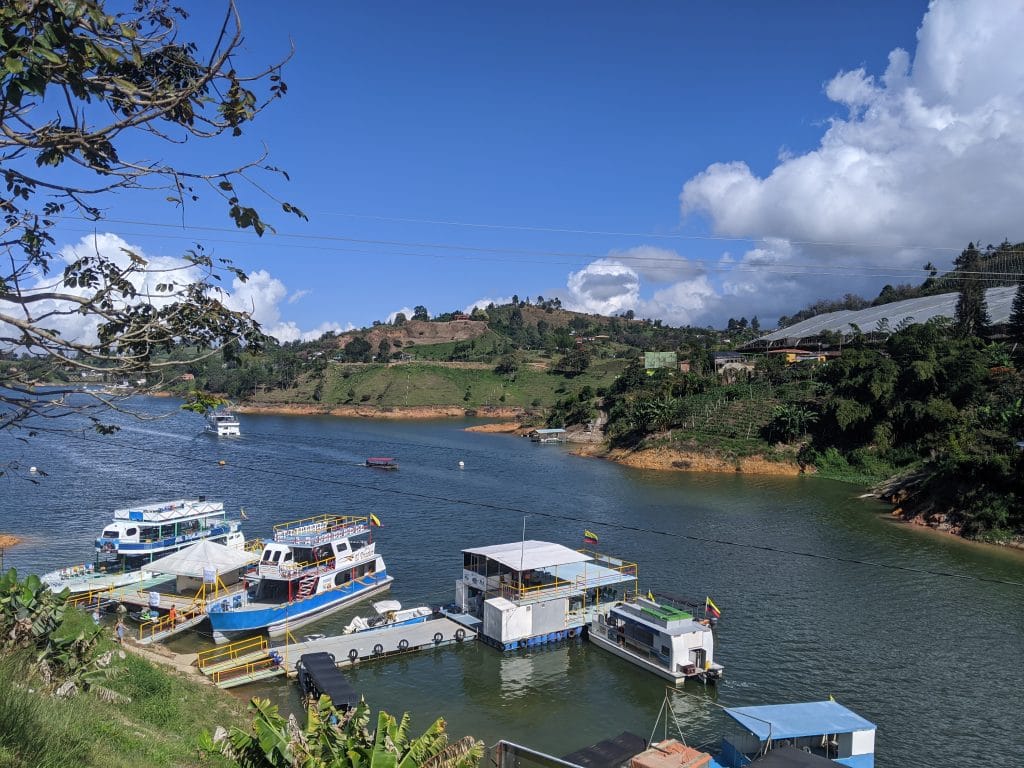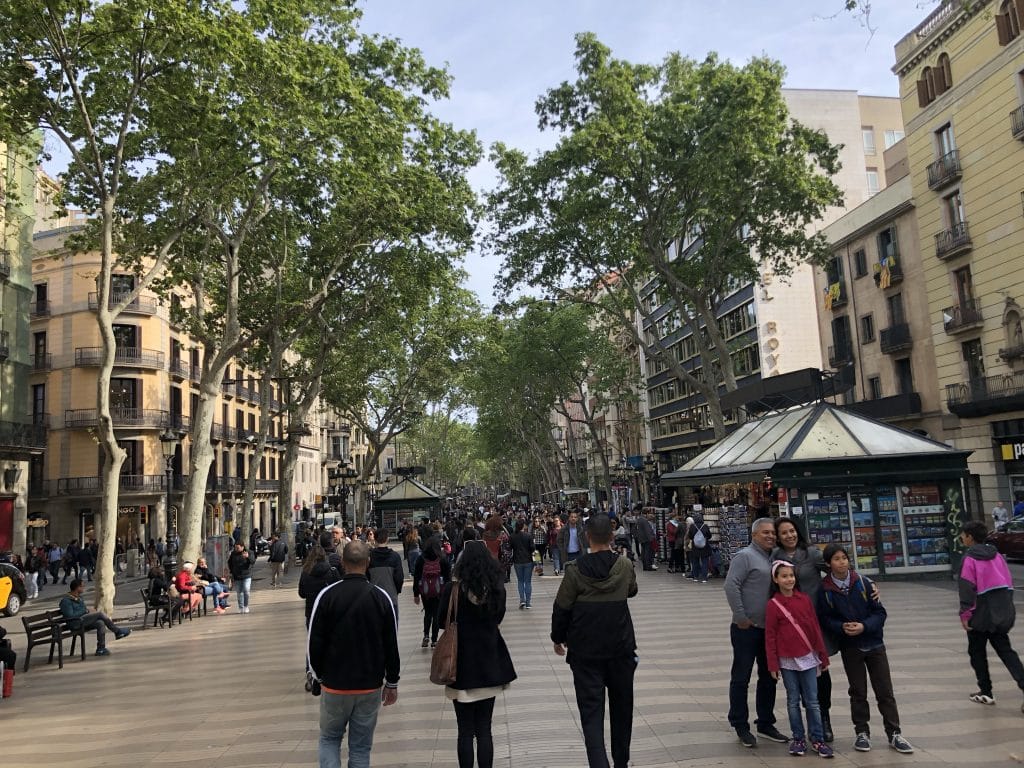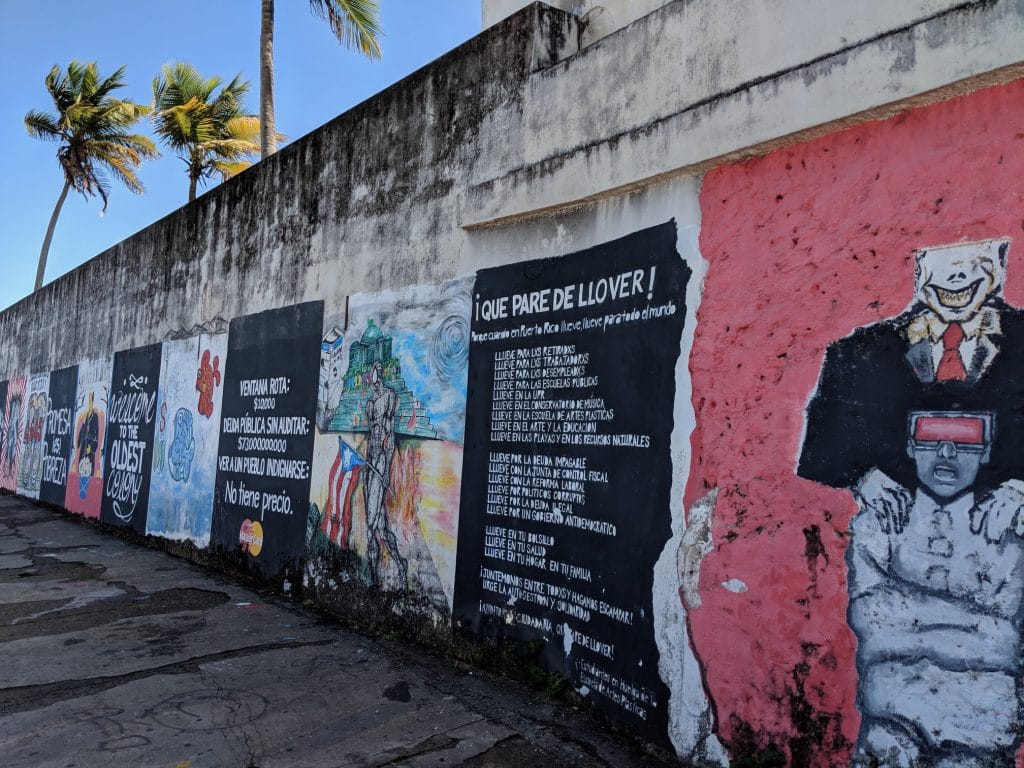Top 10 Musts in Rio de Janerio
Enter the land of samba and carnivals, Sugarloaf Mountains and some of the world’s best coffee. Where the beach is a national pass time and the culture is vibrant and bustling, making it one of the most interesting places I have ever visited.
Despite the sometimes shady feel of Rio de Janeiro, there is a wealth of things to see and discover all over the city. Here are my top 10 musts. Also further down you will find my top 5 warnings for visiting Brazil.
10
See the Metropolitan Cathedral of Saint Sebastian
Located in the center of Rio de Janeiro, the Metropolitan Cathedral of Saint Sebastian was one of the most amazing feats of architecture that stood out for me in the city. It was designed by Edgar de Oliveira de Fonsesca and built between 1964 and 1979. He intended it as a modern play on the architectural style of the Mayan pyramids.
Strategically placed tiny windows provided the only source of light to the interior of Saint Sebastian. The most stunning features of this cathedral for me were the four massive 210 ft stained glass windows that all converged in a glass cross on the ceiling. As a result of the cathedral’s design, those windows provided the only real natural light inside, giving it a very “heavenly” feel.
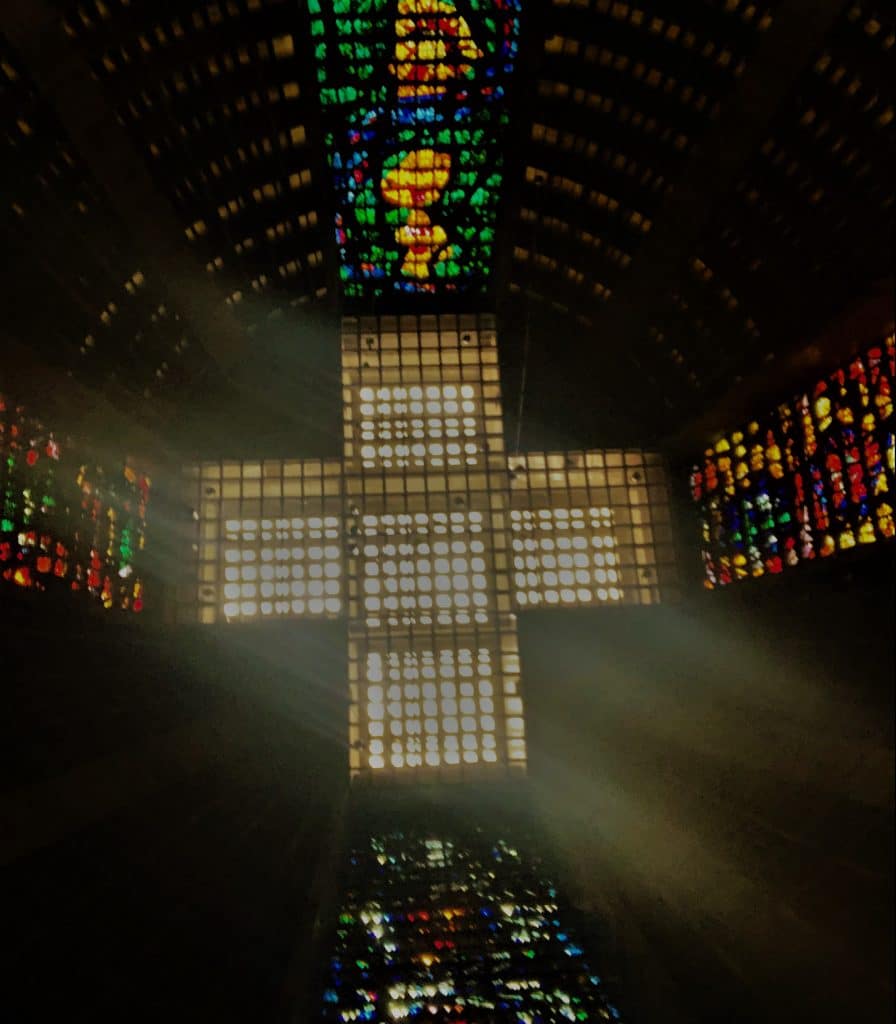
9
Visit Sambadrome Marquês de Sapucaí
Above all else, Rio de Janeiro is world renowned for hosting the annual Carnival of Brazil celebrations. No visit to Rio de Janeiro is complete without a stop at Sambadrome, the 2300 ft area built to house the festivities. Each year between Ash Wednesday and the Friday before, thousands of locals and tourists alike flock to this arena to watch samba schools compete in fabulous parade form.
Unfortunately, my trip had been in January so attending Carnival was not an option for me. However, the grandeur of this arena was not lost on me. The trick was to imagine what it looked and sounded like when packed with over 90,000 people dancing to the beat of the samba drum. When standing on the edge of this massive area, it’s really not that hard to picture how amazing the display would be.
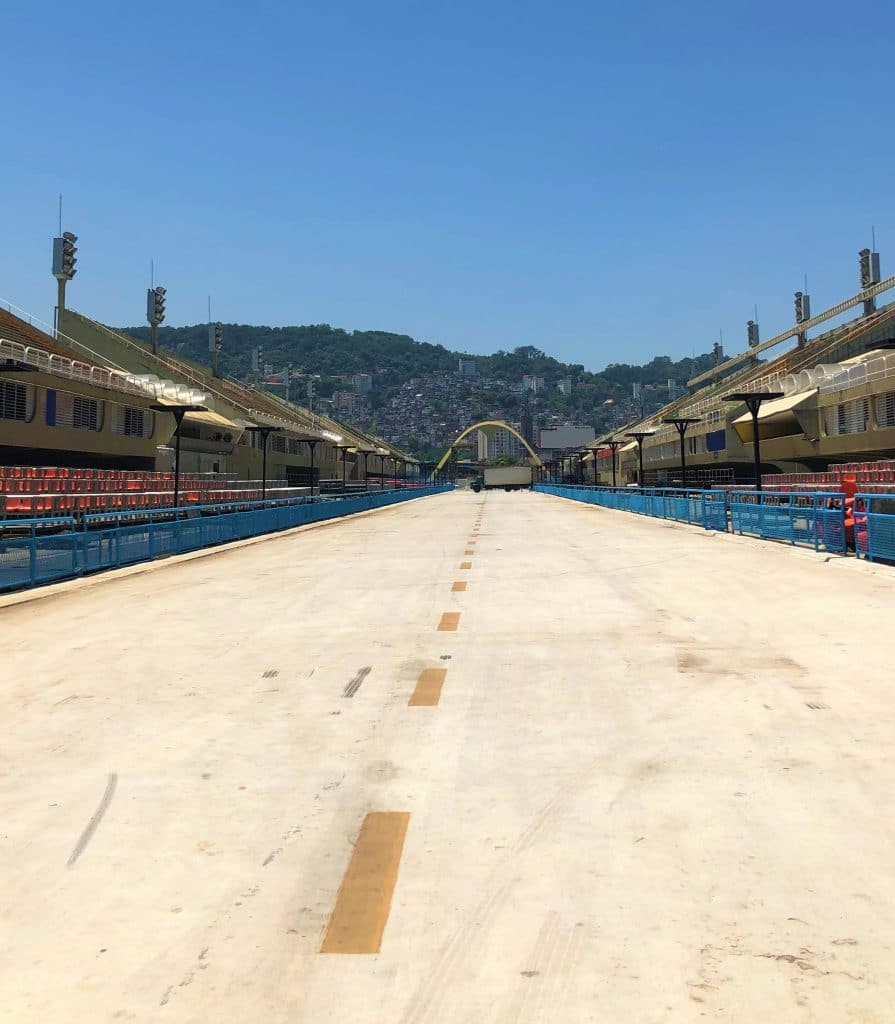
8
Try a Caipirinha
The most popular cocktail in Rio de Janeiro is called caipirinha. As a result of its immense popularity, it was actually named the national cocktail of Brazil. Made from cachaça (which is similar to sugarcane rum), sugar, and lime. It is simple but also incredibly refreshing. The sugar in the drink was sometimes a bit too sweet for me, however there wasn’t a single one served to me that wasn’t super good.
This drink was the perfect thirst quencher on a hot summer day in Rio de Janeiro. They were served everywhere, from the beach stalls to restaurants, bars, and even food stalls throughout the city. It occurred to me that it was the perfect drink to balance the incredibly filling food served in Brazil. Just be careful, this drink packs quite the punch. One drink and even the highest of tolerances will get a buzz.
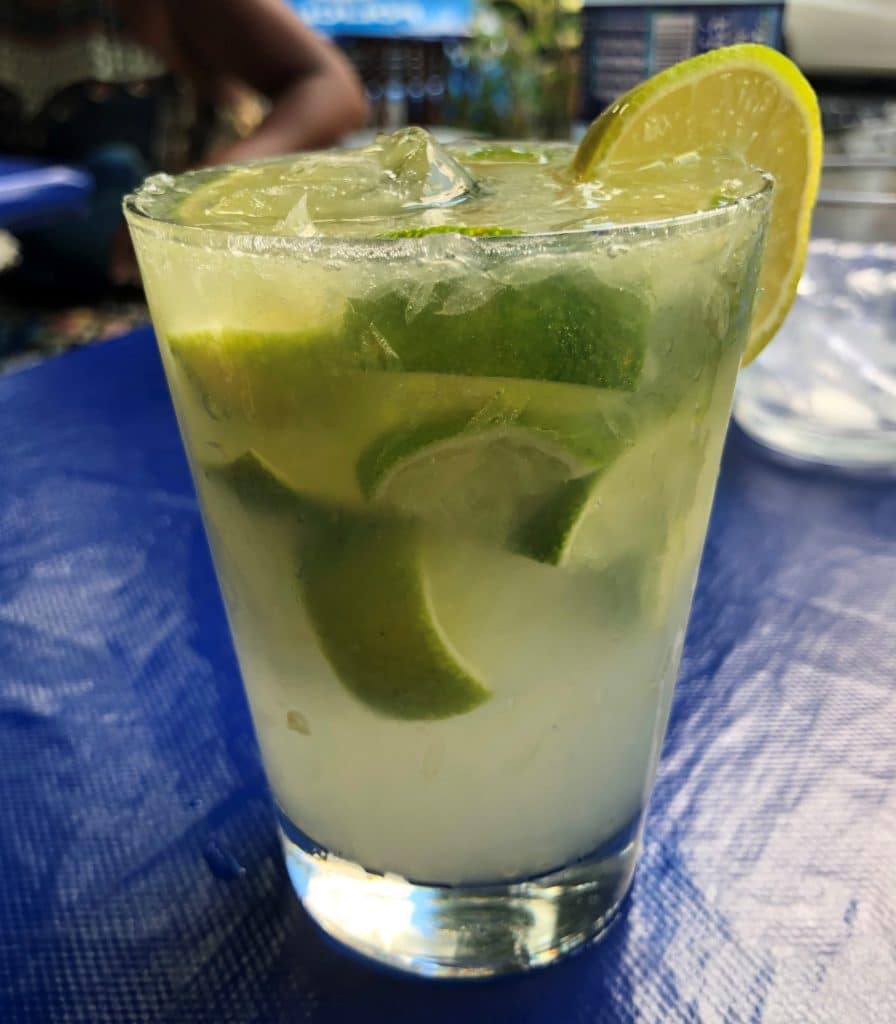
7
Dance a Little Samba
Nothing screams Rio de Janeiro to me like like music that rumbles through the streets. It was blasting on car speakers, at the beach, in restaurants, nightclubs and pretty much every corner of every street. The rhythm of the samba drum was the heartbeat of the city, dictating every step.
I had a fun experience with samba at Sambadrome. On the side of the arena there were Carnival costumes available for rent (though I didn’t rent one). In addition, dancers dressed in full gear were available to take photos with for a small fee. A casual conversation (and added tip) got me a quick dance lesson from this lovely young lady. Let me say, it’s hard to dance the samba. You’ve got to appreciate the amount of talent required to dance it, much less compete in it.
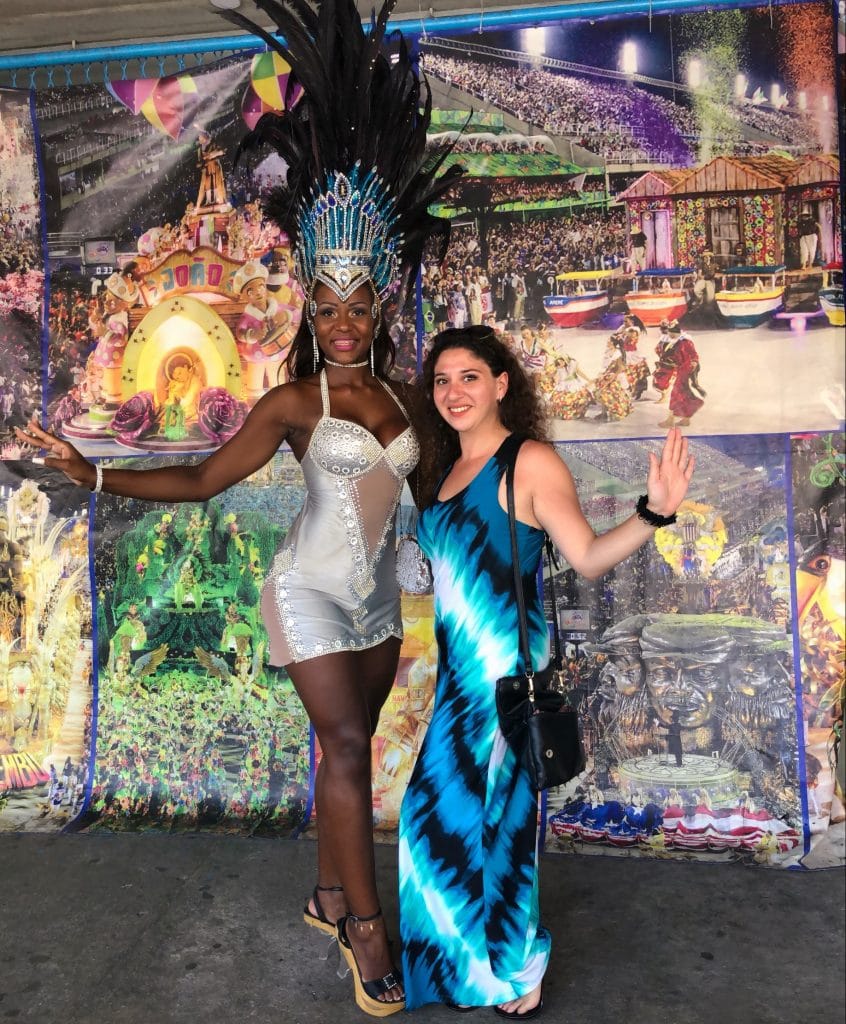
6
Climb the Escadaria Selarón
Just like the vibrant city they are in, the Escadaria Selarón are a bright and colorful artistic display of stairs created by Jorge Selarón. What he called his “tribute to the Brazilian people,” the Selaron Steps are a marvelous work of art.
It was pieced together from over 2000 tiles collected from over 60 countries around the world. As a result of his artistic genius, Selarón covered 215 steps in tile mosaics on Manuel Carneiro Street right in the heart of the city.
These stairs are REALLY popular! The crowds get thick at this ultra tourist sight, so go early. Otherwise the lines just to snag a photo will be impossible to navigate in the narrow area. People actually lined up and yelled at each other for photo-bombing. A bit overcrowded for my tastes, but seeing them is well worth it for any Rio newbie.
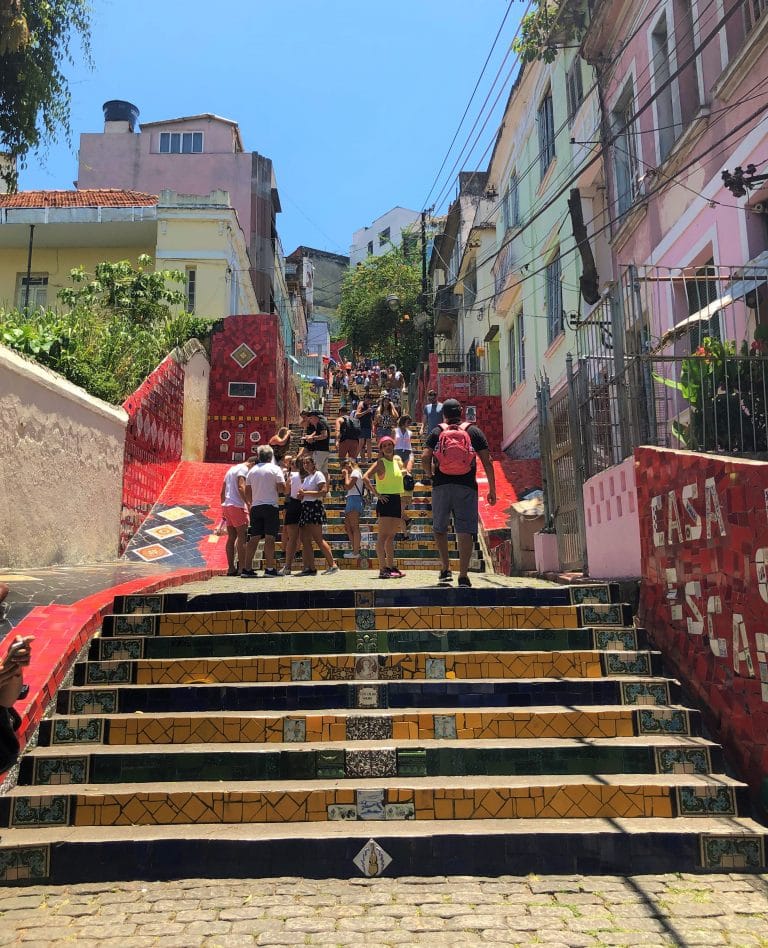
5
See a Futbol Match at Maracanã
Futbol (soccer to Americans) is not just a sport in Rio de Janeiro. It is a whole culture that is played on every TV and radio in the city. Appreciating Rio de Janeiro is impossible without engaging in Brazilian futbol culture. There is nothing quite like sitting in the stands of a packed stadium while listening to the sounds of fans cheering for their team.
The official name of Maracanã is Estádio Jornalista Mário Filho It has a maximum capacity of just under 200,000 and was opened to host the World Cup in 1950. Every Brazilian can recall the disappointment of losing to Uruguay in the final by a score of 2-1.
Brazil, like much of South America, has a culture centered heavily on futbol. As a result, the fans equate the World Cup to a cross in a church – it’s sacred. Despite still living down the sting of disappointment, Brazil continues to play it heart out every chance they get and it is insanely fun to watch.
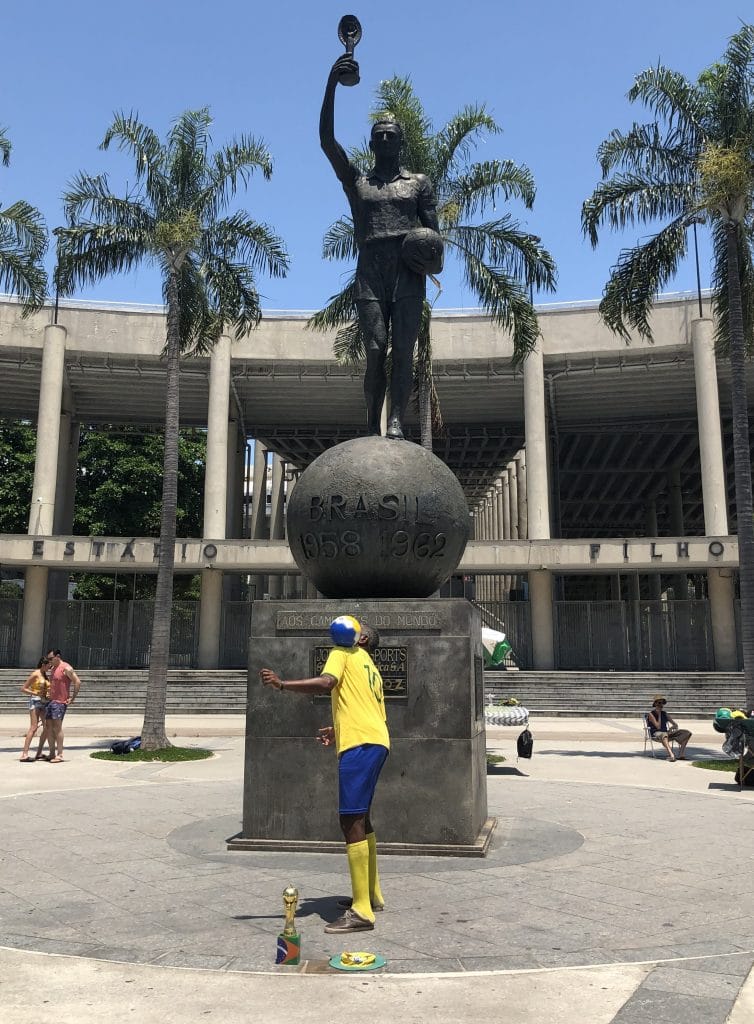
4
Go to Copacabana Beach
January in Rio de Janeiro got to well over 90 degrees, so the city had a tendency to feel sweltering. There was only one real place to pass the time when the concrete felt like it was cooking my sandals. I wasn’t the only one who felt that way.
Sometimes it seemed like everyone in the city was down by the beach cooling off in the waves of the Atlantic Ocean. In addition to being wildly popular, the beaches of Rio de Janeiro also sport amazing views of the mountains that make up the backdrop of the city.
Copacabana Beach was very wide from the street to the water. As a result, there was ample sandy real estate available for a long row of stalls selling food and drinks that stretched as far as the eye could see.
Masses of people were parked with their beach chairs and umbrellas, taking in the sun rays while splashing in the water. It was popular among tourists and locals alike. Just be mindful of your belongings (more on this in the warnings about Rio de Janeiro later in this blog).
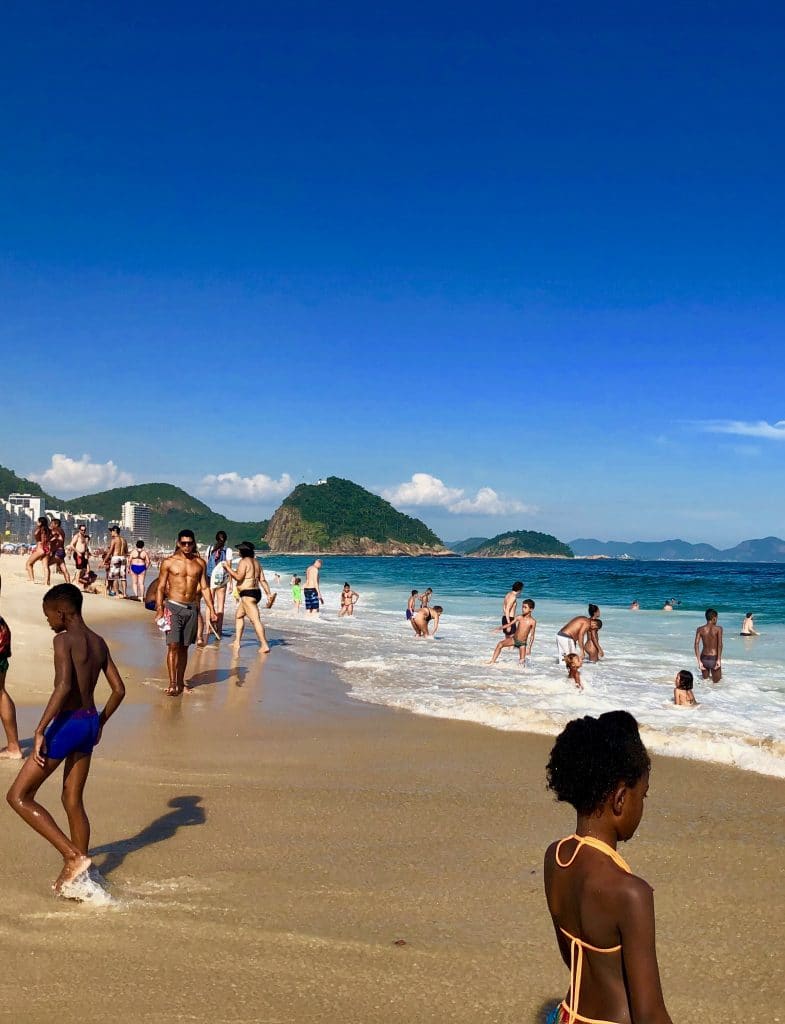
3
Take a Pic with Christ the Redeemer
Every known panoramic view of Rio de Janeiro sice 1931 has Christ the Redeemer spreading his arms high above the city. Standing at 98 ft tall on a 26 ft pedestal, this massive statue towers over the city from the top of Corcovado Mountain. Christ the Redeemer became a cultural icon of Brazil. As a result, it was named one of the New Seven Wonders of the World in July of 2007.
Created by French sculptor Paul Landowski, it was build between 1922 and 1931. In addition, it’s build was a collaborative effort by Brazilian engineer Heitor da Silva Costa, French engineer Albert Caquot, and Romanian sculptor Gheorghe Leonida. Each year it attracts millions of travelers who come from far and wide to see it, making it an absolute must visit in Rio de Janeiro.

2
Eat a LOT of Meat
It was my impression that Brazilians are really big on steak. That was evidenced by the incredible meal inhaled by me at Alfaia Restaurant. The portion sizes were insane. This picture was half of my order. There was another covered plate on the edge of the table with another the other portion.
The sheer magnitude of the dish baffled me. In other words, it led me to the conclusion that Brazilian cuisine was centered around sharing. That doesn’t always bode well for the solo traveler, however it just meant a whole lot of leftovers.
Though seafood is also popular in Rio de Janeiro, beef is a culinary staple. In addition to seared cuts of steak, dishes like carne asado (which is sliced thin steak usually in some sort of sauce with sides of rice and beans) were found on many restaurant menus. As always, the “hole in the wall not rated on Trip Advisor” places generally had the best food. Rio de Janeiro really was a meat lover’s paradise.

1
Ride the Cable Cars at Sugarloaf Mountain
Taking a ride on the cable cars at Sugarloaf Mountain was my absolute favorite of the sights in Rio de Janeiro. The mountain got its name because of its resemblance to a loaf of sugar. It is one of a few granite and quartz mountains that came straight up from the water’s edge.
As a result, these mountains created a unique panorama. In addition, a series of 4 cable cars took me up to different viewing platforms. Each had its own unique view of the stunningly beautiful city. Plus the spacious cable cars were super fun to ride
The views stretched as far as the eye could see. From the mountains to the coastline, the lagoon and up into the favelas, and everything in between, the miles of landscapes were magnificent. Above all else, there was no shortage of phenomenal bird’s eye panoramas.

Warnings & Cautions
for Rio de Janeiro
1
Obtain a Visa for Travel to Brazil
Unlike many other travel destinations, Brazil is not a place U.S. passport holders can just get up and go to. As a result, a visa is required to enter Brazil. This used to be a long and grueling process, however in October 2018 the Ministry of Foreign Affairs Brazil made it possible to obtain a Brazilian visa online vis VFS Global.
The visa costs $40 plus $4.25 processing fee. After that it takes about a week for them to process the completed application. In addition, visas are issued for 10 years, so it’s only necessary to do this once a decade to revisit Brazil. For more information or to apply for a Brazilian visa, visit the VFS Global page here.
2
Register Your Trip with U.S. State Department
Due to increased crime rates in Brazil, the U.S. State Department advises to “exercise increased caution” when traveling. It is highly advisable to register trip details with the Smart Traveler Enrollment Program (STEP). STEP is a free service provided by the U.S. State Department that sends notifications about safety conditions in the country being visited.
3
Keep Copies of Your Passport
Unfortunately, the most common things stolen in Brazil are passports. Losing a passport is a huge hassle, especially if it happens during the course of the trip. It is the most important proof of citizenship, and as a result it is impossible to board a plane without one. In many cases, people only have their passports as valid proof of ID when traveling.
Therefore, it is highly advisable to keep extra passport copies in wallets and luggage for emergency purposes. Though the copy can’t be used in any formal capacity, having it will greatly assist the embassy in the event that an emergency passport needs to be obtained. For more information about the U.S. Consulate General in Rio de Janeiro, visit the embassy website here.
4
Be Aware of Your Belongings
Robbery is the most common form of crime experienced by tourists in Rio de Janeiro. In other words, tourists stand out as targets because they are easy marks. Therefore, it is important to always be aware of belongings such as wallets, cellphones, cameras and passports.
Rio de Janeiro is a bustling city with a lot going on at all times. As a result, pickpockets are professionals at stealing things with ease. That’s actually best case scenario. However, it is just as easy to end up looking down on the sharp end of a knife or gun barrel being held by a junkie looking for his next score.
It was a city that had me looking over my shoulder a lot, which left an unsettling feeling in areas that felt potentially shady. Don’t carry much with you, and be prepared to part with whatever you do. Always keep some spare cash in a separate pocket in case you end up in a situation you need to buy your way out of.
5
Be Extra Careful when Visiting Favelas
The city of Rio de Janeiro is an interesting paradox. On one end it has these amazing beaches and wild natural beauty. However, on the other hand there are about 2.5 million people living in poverty in the slums (known as favelas).
There are over 1,000 favelas in the city and they make up an integral part of the culture in Rio de Janeiro. While interesting to see, these favelas obviously entertain a lot more crime than the more tourist populated areas of the city.
If visiting one is part of the itinerary, do it during the day and do not venture there alone. The Vidigal, Tavares Bastos, Pereira da Silva, and Santa Marta favelas are said to be the most tourist friendly and interesting to explore. Above all, be aware of location and belongings. Unfortunately Rio de Janeiro is a city where things (and sometimes people) tend to disappear.
Tell Me Your Thoughts
More Posts
Buenos Aires is the unbelievably fantastic metropolitan capital of Argentina. It is a unique city, unlike most in South America. Largely influenced by European and…
Barcelona is probably the most unique aspect of España’s mainland. In a city with two native languages, it’s no surprise that two native Catalans, Ignacio Ussía and Sergi…
If you’re anything like me, you’ll know a good idea when you hear one. That’s how my boyfriend and I got to experience some of Guatapé on a day trip from Medellin…
The city of San Juan, Puerto Rico is definitely a place “rich” in a large number of ways, as I rediscovered when visited back in February. There is unparalleled beauty to be found…
Just a short ferry ride across the Rio de la Plata from Buenos Aires, Argentina is the quaint town of Colonia in Uruguay. Officially named Colonia de Sacramento…
Fact! Cartagena is Colombia’s most popular destination for ringing in the new year. Rightfully so, as the city puts on quite the party. The tropical climate creates the most…
Other Destinations
More Travel Inspiration
Search hotels and more...

Who Am I?
Want to know what makes me such an expert on travel? Find out a little bit more about how I got to visit 50+ countries around the world.
NEWSLETTER SIGNUP
Sign up to get updates about my upcoming blog posts!





